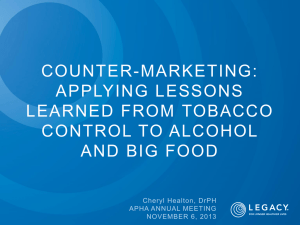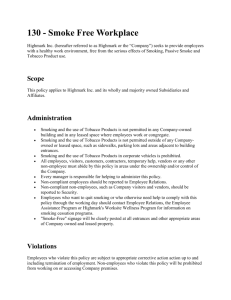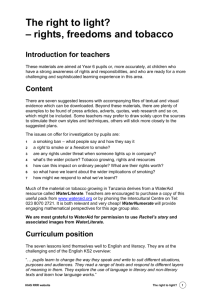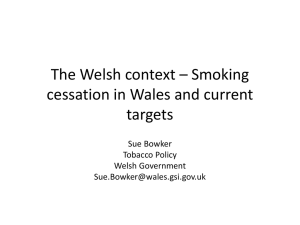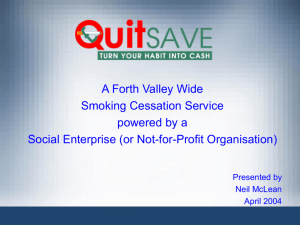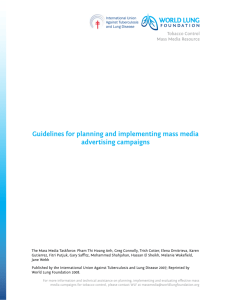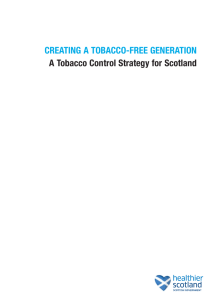Media Education Campaigns
advertisement
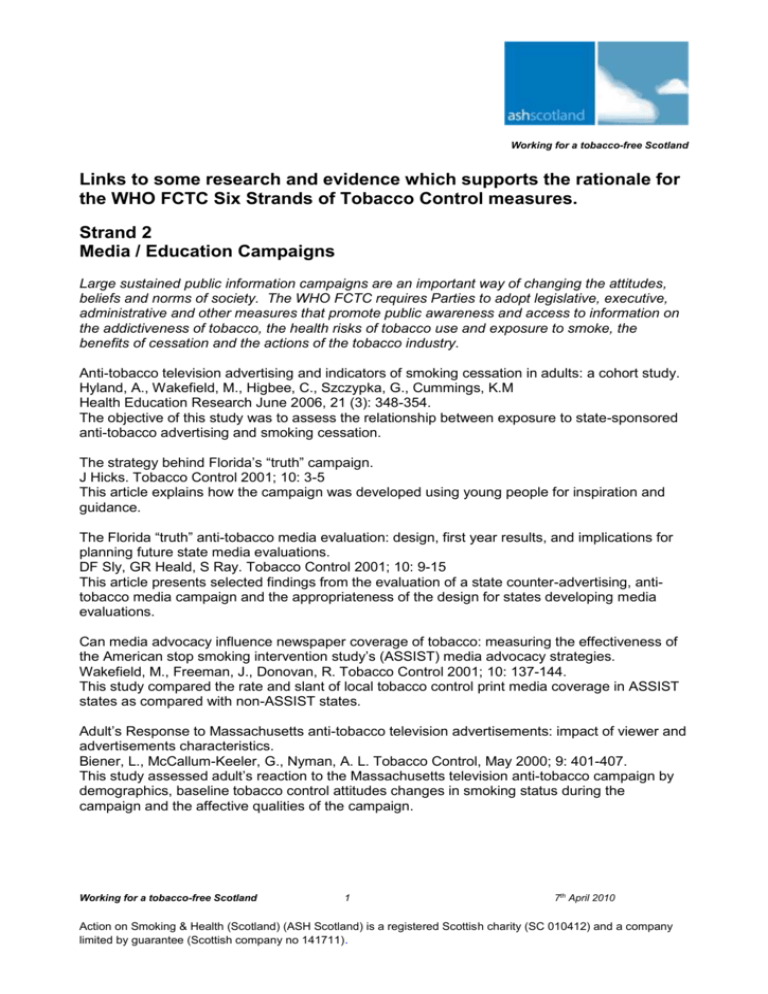
Working for a tobacco-free Scotland Links to some research and evidence which supports the rationale for the WHO FCTC Six Strands of Tobacco Control measures. Strand 2 Media / Education Campaigns Large sustained public information campaigns are an important way of changing the attitudes, beliefs and norms of society. The WHO FCTC requires Parties to adopt legislative, executive, administrative and other measures that promote public awareness and access to information on the addictiveness of tobacco, the health risks of tobacco use and exposure to smoke, the benefits of cessation and the actions of the tobacco industry. Anti-tobacco television advertising and indicators of smoking cessation in adults: a cohort study. Hyland, A., Wakefield, M., Higbee, C., Szczypka, G., Cummings, K.M Health Education Research June 2006, 21 (3): 348-354. The objective of this study was to assess the relationship between exposure to state-sponsored anti-tobacco advertising and smoking cessation. The strategy behind Florida’s “truth” campaign. J Hicks. Tobacco Control 2001; 10: 3-5 This article explains how the campaign was developed using young people for inspiration and guidance. The Florida “truth” anti-tobacco media evaluation: design, first year results, and implications for planning future state media evaluations. DF Sly, GR Heald, S Ray. Tobacco Control 2001; 10: 9-15 This article presents selected findings from the evaluation of a state counter-advertising, antitobacco media campaign and the appropriateness of the design for states developing media evaluations. Can media advocacy influence newspaper coverage of tobacco: measuring the effectiveness of the American stop smoking intervention study’s (ASSIST) media advocacy strategies. Wakefield, M., Freeman, J., Donovan, R. Tobacco Control 2001; 10: 137-144. This study compared the rate and slant of local tobacco control print media coverage in ASSIST states as compared with non-ASSIST states. Adult’s Response to Massachusetts anti-tobacco television advertisements: impact of viewer and advertisements characteristics. Biener, L., McCallum-Keeler, G., Nyman, A. L. Tobacco Control, May 2000; 9: 401-407. This study assessed adult’s reaction to the Massachusetts television anti-tobacco campaign by demographics, baseline tobacco control attitudes changes in smoking status during the campaign and the affective qualities of the campaign. Working for a tobacco-free Scotland 1 7th April 2010 Action on Smoking & Health (Scotland) (ASH Scotland) is a registered Scottish charity (SC 010412) and a company limited by guarantee (Scottish company no 141711). Mass Media Anti-smoking Campaigns: A Powerful Tool for Health Promotion. M Seigal Annals of Internal Medicine. July 1998; 129 (2): 128-132 This article looks at the powerful effect mass media can have on behaviour and how this has been utilised in the USA to reduce smoking prevalence despite the efforts of the tobacco industry to hinder the campaigns. The article highlights how aggressive campaigns attacking the tobacco industry and challenging social norms have been the most successful. A mass media programme to prevent smoking among adolescents: costs and cost effectiveness. Secker – Walker, R.H., Worden, J.K., Holland, R.r>, Flynn, B.S., Detsky, A.S Tobacco Control. 1997, 6: 207-212 This article examines cost and cost effectiveness of a four-year mass media programme previously shown to prevent the onset of smoking amongst adolescents. Social marketing: strategies for changing public behaviour P Kotler, EL Roberto London: Collier Macmillan, 1989 Subject Headings: Social change, Advertising Campaigns, Planning, Marketing Produced by Ash Scotland’s Local Alliances Project December 2006 updated 7th April 2010 All websites and links were checked on 7th April 2010 Working for a tobacco-free Scotland 2 7th April 2010 Action on Smoking & Health (Scotland) (ASH Scotland) is a registered Scottish charity (SC 010412) and a company limited by guarantee (Scottish company no 141711).



